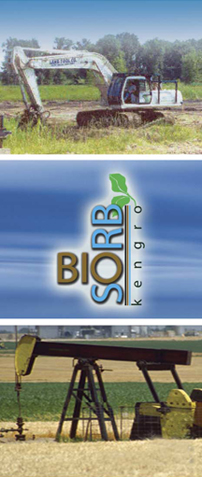| 1. How does Kengro Biosorb compare in cost to other granular absorbents |
| Lbs of Absorbent to absorb 1 Gal T-102 Light Crude |
|
Amount/lbs |
Cost/$ |
| Kengro Biosorb |
1.03 |
1.89 |
| Clay |
15.86 |
2.18 |
| Sphagsorb |
1.6 |
2.2 |
| Corn Cob |
8 |
1.4 |
| Absorbent W |
1.79 |
3.12 |
| Oil Gator/Enretech |
2.38 |
1.98 |
|
| 2. How long will it take for bioremediation of contaminated soil? |
| This depends on environmental conditions. The product will encapsulate the hydrocarbon until conditions are conducive for micorbial activity. Warm temperature with adequate soil moisture and soil nutrients will enhance rapid bioremediation. See Needville, TX tank battery research. |
| 3. Besides cost, what are other advantages of Kengro Biosorb versus competition? |
| Product Properties |
Kengro Biosorb |
Clay |
Corn Cob |
Absorbent W |
Sphagsorb |
Oil Gator |
| Biodegradable |
 |
|
 |
 |
 |
 |
| Bioremedial* |
 |
|
|
|
|
 |
| Non-Abrasive |
 |
|
|
 |
 |
 |
| Non-Leaching |
 |
|
|
|
 |
|
| Vapor Suppression |
 |
|
|
|
 |
|
| Non Carcinogenic |
 |
|
 |
 |
 |
 |
| Repels Water |
 |
|
|
|
 |
|
| Annual Renewable Resource |
 |
|
 |
|
|
 |
 |
| 4. How does Kengro Biosorb used as an In Situ bioremediation technology compare to cost of other treatment technologies? |
|
|
| 5. Are the microorganisms non pathogenic? |
| None of the microbes are pathogenic to humans. |
 |





